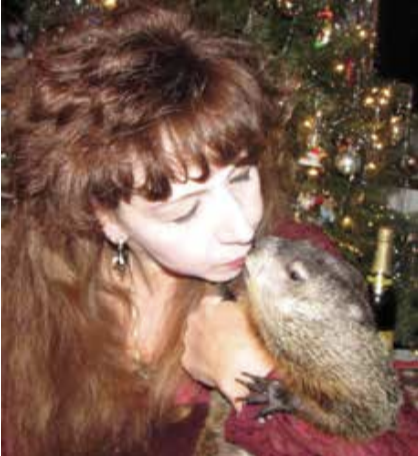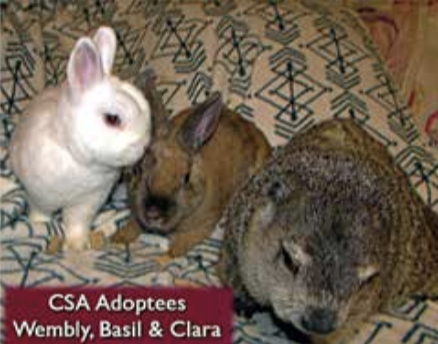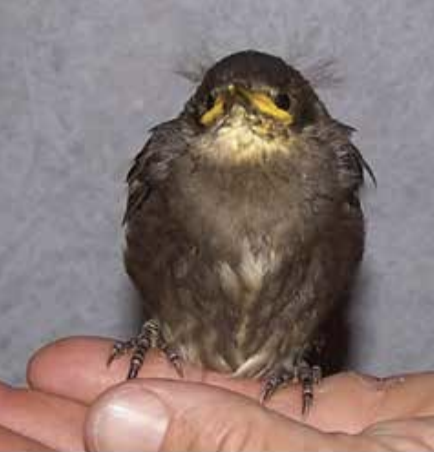Love is a Many Species Thing
By Mil Scott
Throughout my childhood, a story circulated in our family about a German Shepherd named Fritz, who belonged to my grandfather back in the late 1920s. Newly married to my grandmother, Grandpa was working one day in the car repair garage he’d recently built in Broadway when his best friend Earl stopped by. Earl was on his way to Easton and since Grandpa would be busy for the next few hours, they decided he should take Fritz along with him for company. Although the details are sketchy these many years later, somehow during the course of Earl’s business in Easton (in the vicinity of the Square), Fritz disappeared – and the frantic search he made for him over the next hour or so yielded no results. Finally, he was forced to return home and break the news that he had lost Grandpa’s beloved dog.
A few days later, Grandpa had the occasion to go to Easton himself. Crossing over what’s now known as the “free bridge,” he began traveling up Northampton St., past
where Connexions Gallery currently stands and approaching Center Square. As he rounded the circle and stopped at a traffic light on the far side, he was startled by a blur of black and tan streaking toward him from an alley. Almost before he could grasp what it might be, the blur transformed — as quickly as an Animagus from the Harry Potter world — into the fantastic beast
Fritz, who recognize the sound of that one engine, appeared literally before his eyes, having bounded right onto the hood of Grandpa’s car!
Although I have to admit I might not have believed this really happened had I not heard it from Grandpa himself – truly the last person who would ever stretch the truth… and who was truly a magnet for animals throughout his life – similarly incredible (and likewise true) tales of unbreakable human-dog bonds can be found in countless print volumes and nonfiction-based films. Less commonly discovered, however, are the equally strong bonds between humans and other animal species – several of which, unlike the historical epic of Fritz, my husband Andre and I have had the privilege of experiencing firsthand… and many of which, beginning with the discovery of a domestic rat under a drive-up mailbox (as explained in my article for last year’s CSA Journal) have involved species thought by many to be pests rather than pets. One notable example was a mouse called Austin (nicknamed Audie), who came to us as a rough week old baby, uncovered during the reconstruction of the CSA shelter in 2008. After the few tense days that invariably mark efforts to raise such tiny orphans, this little rodent began to thrive and to display a spirit nearly bursting the seams of the minuscule body in which he was (arguably never quite fully) contained. Filled with a love so devoted it fairly pulled him to the roof of his home – which he eagerly traversed as his way of begging to be brought out – upon release he would invariably scurry into my hand, ready to ride around the house on my shoulder, in my hair, or peeking from the neckline of my shirt.
Like many dogs, Audie also thought of himself as a fierce warrior – or perhaps merely a knight in the mold of Despereaux Tilling. In any case, the list of dangers as perceived by a mouse differs slightly from that of canine family members – a fact we hadn’t fully considered when assembling a bookshelf we’d just brought home from the store one evening, on which I was working with Audie on my shoulder, while Andre worked with Wellington, one of our very gentlest pet rats, on his. In the wild, rats and mice are mortal enemies – an equation in which, as one might expect, rats are the natural aggressors. Knowing Wellington wouldn’t show aggression to flies, however, let alone to Audie, this was thought far from our minds as lost in our efforts to secure Screw A into Hole B of the bookshelf… while attempting to keep components C and D held together long enough to make this happen, our shoulders came in close proximity – bringing our respective rodent pals into close proximity as well. Much to our (and Wellington’s) surprise, wild-born Audie wasn’t about to take any chances on Wellington failing to live up to his domestic nature – and promptly leaped directly onto the shocked rat’s nose… to which he clung valiantly until Andre rescued poor Wellington from his clutches. Though it was never fully clear whether Audie had been protecting himself or me from this (not at all) potentially deadly foe, he climbed back up to my shoulder with a look that clearly conveyed the conviction he’d showed Wellington once and for all who was the bigger man.
Of course, in addition to being a knight, Despereaux Tilling was also a gentleman – one, like Audie, deeply devoted to his human lady love. What might surprise those who’ve never met one, however, is what true gentlemen (and ladies) are another (ostensibly) “pest” species… European Starlings. Much like the circumstances that
forced us into crash courses on our other unusual pets, it was the discovery of a barely feathered baby, fallen from a nest in the rafters of an unfinished garage-top room, that taught us how inaccurate are all the stereotypes about Starling aggression (such as taking over the nests of “more desirable” birds…when in fact, as cavity dwellers,
they generally occupy crevices in building spaces rather than nests in trees…and are actually among the gentler birds – easily displaced themselves by sparrows, for example, despite the latter’s smaller size). As noted in the aforementioned article that appeared in last year’s Journal, Starlings can acquire a vocabulary of 800 words – and use both this, and more uniquely avian sounds, to not merely chatter idly, but to also express their love. What’s more, while it’s assumed birds that speak human words are merely exercising mimicry, interacting with our own has taught us that they almost invariably use the words they know inappropriate ways – such as greeting you with “Hi, how you doin’?” for example, rather than “Night night, sweet dreams” – and are particularly effusive in their sincerely inflected reiterations of “I love you.” And since, as Shakespeare noted, it’s a lack of words that often serves as “the perfectest herald of joy,” a starling will stand guard on the pillow during a nap, cooing the gentlest intonations as he awaits his human mistress’s rising to share in the more wakeful conversation. Surely, to those who think to call an enemy a birdbrain is the height of insult, it would come as a surprise to learn instead they’re giving an unintended compliment — one that could only be equaled if “birdheart” were an expression as well.
Most surprising to many people, however, is the bond groundhogs are capable of forging with their humans, the males among which (in our experience at least) become particularly attached. While both sexes exhibit a great sense of intelligence, cleanliness (instinctive litter box use, for example), and autonomy (i.e. ours have free run of the house, use “doggy steps” to climb onto the couch and bed, frequently visit us in the kitchen to request snacks, etc.), and all seem to be “one family” individuals (with an emphasis on individual), adoption of Moses last year has hinted to us that the extreme closeness exhibited by the orphaned boy who long ago introduced us to the species was probably more than an expression of his own individuality, and instead quite possibly a trait that distinguishes groundhog boys across the board. In any event, surely no dog or cat has ever displayed a greater level of devotion than that of Moses, who truly lives to spend time with his human mom, right down to waiting every night under the covers in anticipation of blissfully sleeping snuggled tight against me all night long.
Of course, given groundhogs, like mice, rats, and squirrels (the red variety of which we’ve learned firsthand make amazing pets as well) are also rodents, it’s not at all surprising to us that they should be possessed of such great love – which brings us
full circle to the lesson explained in action by our beloved first rat Molly, and her sons Noonan and Flannery. While a vast number of people across the globe fear few creatures more, Molly’s gentle and forgiving nature set an example any human would do well to emulate. Despite displacement from a home we can only speculate about, Molly immediately gave two complete
strangers the benefit of every doubt, and soon adopted us as her own (though as parents or children, we may never quite be sure). Whether riding around the house inside my sweatshirt, snuggled against my hand as she rested with her boys on a couch cushion, or “whispering” in her unique little “voice” as she sat on my shoulder, pressing close against my ear, Molly demonstrated that good things can truly come in very small packages, and that neither size nor species need prove barriers to true love. Speaking of full circle, as a final note I have to add that after adopting Molly, I learned that Grandpa was, in fact, the first person in my family to be owned by a pet rat (in addition to a long line of canine successors to Fritz, several cats, a goat, a parakeet, and perhaps most notably, a wild chipmunk who came to trust him so completely he would visit every day to eat nuts while sitting in Grandpa’s hand). Given this – quite literal – animal magnetism, it’s far from a coincidence that he was also the strongest influence on my childhood…and surely no surprise that he’s remained so well beyond.



